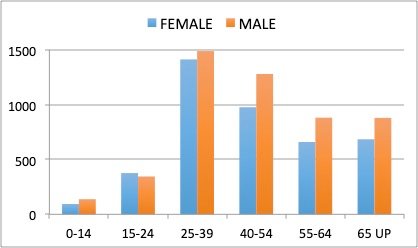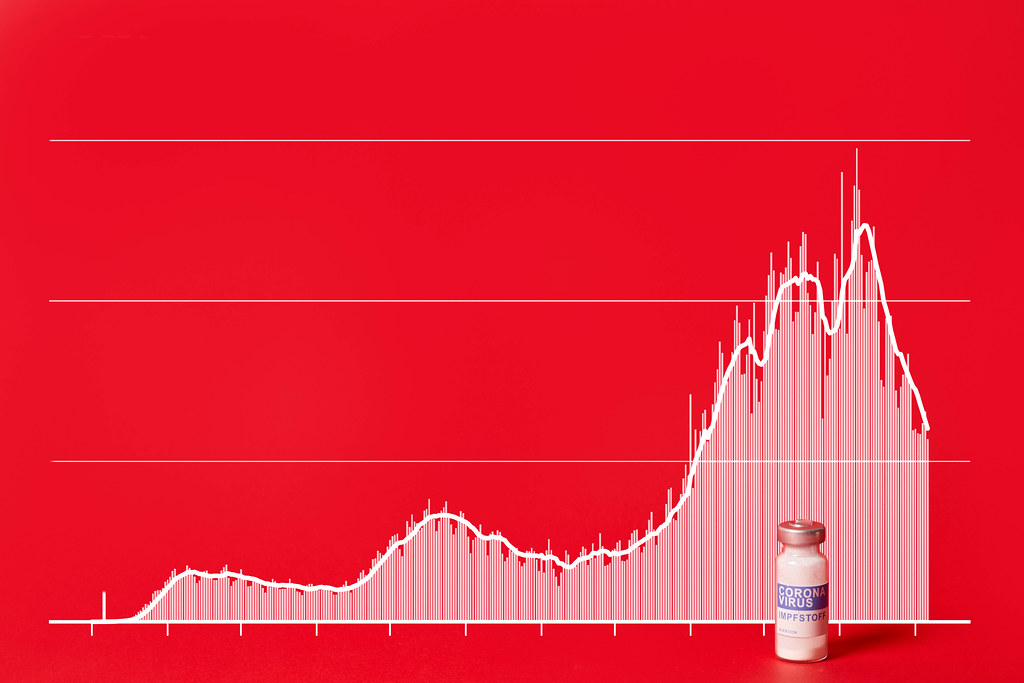Difference Between COVID-19 First, Second and Third Wave
In the late 2019, about a dozen of pneumonia like cases of unknown origin was reported in the sprawling capital of Central China’s Hubei province, Wuhan, as the world was busy welcoming the New Year. The patients were reportedly showing symptoms like fever, fatigue, cough, and had difficulty breathing. The cases were then traced back to a seafood market in Wuhan and China reported its first known death from the illness caused by the new virus which was identified as the 2019 novel coronavirus (2019-nCoV) and the infection caused by the virus was correspondingly named 2019 coronavirus disease (COVID-19) which soon grappled nations all around the world by February 2020.
It was late January, when the United States reported its first victim of the novel coronavirus – a man in his 30’s in the Washington State. By the end of January, even the WHO declared the outbreak a global health emergency following the mounting cases worldwide, including in 18 nations outside China. A month later, the virus made it across continents affecting almost everyone, raising concerns across the globe, and on March 11, 2020, WHO finally declared the outbreak a global pandemic and it was then the virus was named COVID-19.
The rapid of the mounting events led to panic everywhere and after the characterization of the virus as a pandemic, several nations started realizing the severity of the situation and implemented some stringent measures to curb the spread. Thousands of restaurants, cinemas, and bars across New York, Chicago, San Francisco and Los Angeles were ordered to shut down their operations. By the end of March 2020, several nations including the UK, US, India and other European countries reported a massive surge in caseloads and subsequent deaths, and had implemented extensive measures, such as lockdowns, urging people to stay at home and stay safe.

What is the First Wave?
Although, it started with a small number of people getting infected in the early 2020, the virus took less than two months to grapple the nations worldwide. The WHO confirmed there were 4,338, 658 confirmed cases of COVID-19, by March 15, 2020, followed by 297,119 deaths globally. The March 23 2020 lockdown was the single biggest experiment in human history. The first wave hit the nations hard and with limited knowledge of the epidemiology of the novel coronavirus and lack of specialized equipment, the aftereffects were devastating. The lockdown had a direct impact on the economies worldwide with people losing employment, decreased incomes, and companies going out of business, tumbling stock markets, and the damaged travel industry. The impact soon started to show on social lives, and across health sectors.
By April 24, 2020, as over 210 nations continued to fight the spread of the virus, the United States was the worst hit nation with over 895,776 cases and over 50,000 deaths. According to the CDC, the infections due to the COVID-19 had increased at an average of 28,000 approximately. By April 26, the number of confirmed cases has reached over 3 million globally and over 200,000 were reportedly succumbed to the disease. By then, many countries started to ease down on lockdowns, as businesses started reopening their operations. Several researchers have concluded that the lockdowns were effective at putting a curb on the outbreak and the deaths it followed.

What is the Second Wave of COVID -19?
Many researchers and experts in the field have hinted at a possible second wave of the novel coronavirus and that it would likely to be different than the first wave in many aspects. Initially, some people wondered if the outbreak would be gone by summer months, but the U.S. witnessed a significant rise in the number of COVID-19 infections, which raised concerns among the healthcare officials that more surges are likely to be seen in the coming months. The second wave was linked to the human carelessness and those who strictly followed the COVID-19 protective guidelines were less likely to be exposed to the virus. Others who were not so vigilant in following preventive measures such as physical distancing, hand-washing and mask-wearing, became the victims to the second wave.
The second-worst hit nation, India is possibly looking at what seems to be the second wave of the deadly outbreak, with over 200,000 cases a day. In April 20, 2021 alone, India witnessed a massive surge of 295,000 fresh COVID-19 cases compared to only 10,000 cases reported about two months back. India had seen a decline in cases after September 2020, which followed up until February. March was not so bad either, but starting the month of April, the people of India are looking at almost 100,000 cases daily and a significant number of deaths. If the second wave has taught the nation’s people anything, it is how quickly the infection is spreading. Looking at the numbers, it is clear that the pandemic is far from over.

What is the Third Wave of COVID-19?
The healthcare system around the world, especially in India, is overwhelmed with increasing number of cases, which affect their capacity to assist patients. The pandemic mitigation measures such as closures of schools and universities, voluntary isolation and quarantine, cancellation of mass gatherings, limited workforce at offices, and other social distancing measures have delayed the peak and magnitude of the pandemic so far. However, we are now looking at the new variants of the SARS-CoV-2 virus, which are very different from the one first detected in China. These new variants, especially the double mutation variant, proved to be mostly ineffective against the current COVID-19 vaccines in circulation, which raised concerns among the healthcare fraternity.
European nations, amidst the growing concerns over the AstraZeneca COVID-19 vaccine and the blood clot issues it pertains, are looking at the third wave of the coronavirus pandemic, as the continent’s slow vaccine rollout is aggravating the crisis further. In March 2021, Italy has imposed new lockdown measures as Germany witnessed a fresh surge of cases. France overwhelmed with the mounting pressure on the healthcare system, announced a third nationwide lockdown in April 2021, allowing only the essential businesses to remain open.
- Difference Between Caucus and Primary - June 18, 2024
- Difference Between PPO and POS - May 30, 2024
- Difference Between RFID and NFC - May 28, 2024
Search DifferenceBetween.net :
Leave a Response
References :
[0]Allam, Zaheer. Surveying the Covid-19 Pandemic and Its Implications: Urban Health, Data Technology and Political Economy. Amsterdam, Netherlands: Elsevier, 2020. Print
[1]Maller, Santosh. A Quick Guide to Impact of COVID 19 on Financial Reporting. London, UK: Bloomsbury Publishing, 2021. Print
[2]Rabadan, Raul. Understanding Coronavirus. Cambridge, UK: Cambridge University Press, 2020. Print
[3]Qu, Jie-Ming, et al. COVID-19: The Essentials of Prevention and Treatment. Amsterdam, Netherlands: Elsevier, 2020. Print
[4]Koley, Tapas K. and Monika Dhole. The COVID-19 Pandemic: The Deadly Coronavirus Outbreak. Abingdon, UK: Taylor & Francis, 2020. Print
[5]“Covid-19: France enters third national lockdown amid ICU surge.” BBC News, The BBC, 3 April 2021, bbc.com/news/world-europe-56622471. Accessed 21 April 2021
[6]Fisayo, T. an Sonia T.” Three waves of the COVID-19 pandemic.” Postgraduate Medical Journal, 18 August 2020. doi: 10.1136/postgradmedj-2020-138564. Accessed 21 April 2021
[7]Image credit: https://live.staticflickr.com/65535/51061378867_2a90be2ece_b.jpg
[8]Image credit: https://live.staticflickr.com/65535/50096789466_9baafe67b7_b.jpg
[9]Image credit: https://up.edu.ph/wp-content/uploads/2020/05/0506_figure_2_PH_age.jpg
